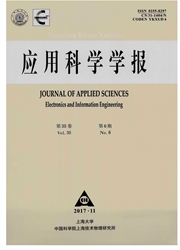

 中文摘要:
中文摘要:
针对汉语语音文档检索中最优识别单元和检索单元不一致的问题,提出一种基于子词(position specific posterior lattices, PSPL)的语音文档索引方法;该方法以词为识别单元对语音文档进行解码,得到PSPL;然后对PSPL进行子词切分,并根据子词弧与原始词弧的后验概率关系,将PSPL转换为相应的子词PSPL,以子词PSPL为索引进行查询项检索.实验结果表明,所提出的方法在利用丰富语言信息的同时,解决了词解码器存在的边界分割不正确的问题,检索性能明显优于目前普遍使用的识别单元和检索单元均为词的PSPL索引方法.
 英文摘要:
英文摘要:
A spoken document indexing method based on subword-based position specific posterior lattices (S- PSPL) is proposed to overcome inconsistency between optimal recognition unit and retrieval unit in the existing Chinese spoken document indexing methods. In the proposed method, a word-based PSPL is generated with a word-based speech recognizer. Each word in the PSPL is replaced by its constituent subword units. According to the posterior probability relationship between each word and its constituent subword units, the original PSPL can be converted to the corresponding S-PSPL to be used in generating a subword-based index for retrieval. Experimental results show that the new method can make use of a well-trained language model, and avoid incorrect segmentation in the word-based recognizer as well. Better performance is obtained compared to the current indexing methods that use words as both recognition and retrieval units.
 同期刊论文项目
同期刊论文项目
 同项目期刊论文
同项目期刊论文
 期刊信息
期刊信息
